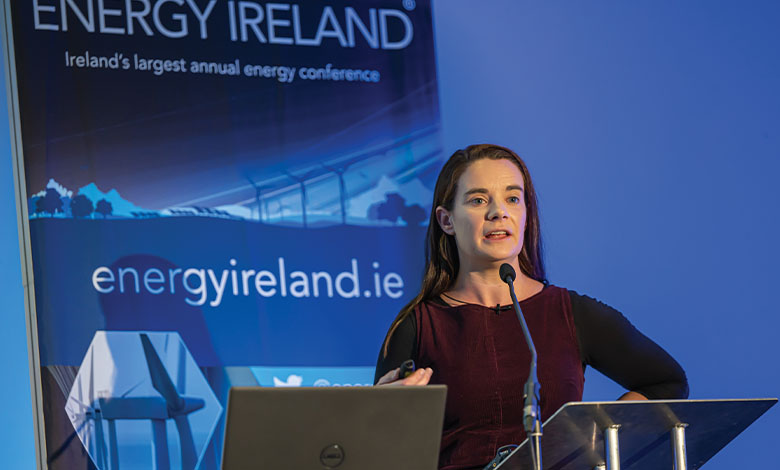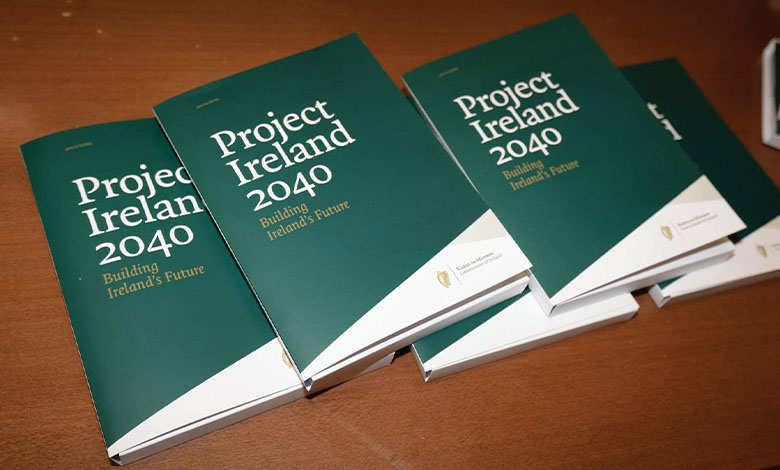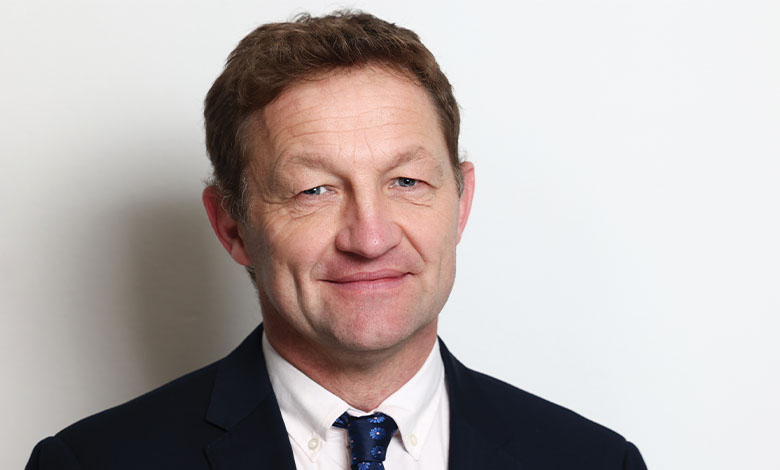
Interim Minister: Carál Ní Chuilín
10th July 2020
Covid-19: A turning point
20th July 2020Opposition: Home for now

More than any other policy area, housing dominated discourse during General Election 2020. As the new Government sets its course, many within the housing sector have cautiously welcomed its rhetoric, though it has not escaped criticism. Sinn Féin housing spokesperson Eoin Ó Broin engages with Ciarán Galway to outline his critique of the Programme for Government (PfG) and discuss alternative policy proposals.
Fresh after publishing a ‘Draft Affordable Housing Circular’, Eoin Ó Broin TD was fiercely critical in his analysis of the Programme for Government’s housing components. Reacting via social media, where his message has found fertile ground among young renters and prospective first time buyers, Sinn Féin’s housing spokesperson said: “It gives me great regret to say that if this is the basis for the future government, then the housing crisis is set to continue into the future.” Latterly, in an apparent statement of intent as the chief Opposition, Sinn Féin utilised its first Private Members’ time in the 33rd Dáil to present a motion on affordable housing, which was subsequently voted down by the Government.
What does the Programme for Government get wrong in your opinion?
The crucial thing about these documents is not the rhetoric. You can write ‘housing for all’ as much as you want, but what really matters are the key commitments. It’s a continuation of the Rebuilding Ireland programme and almost all of what is in the Programme for Government is either existing policy or policy that [former Housing Minister] Eoghan Murphy had announced in the last 12 months.
Social housing
Take social housing. The Programme commits to 50,000 social houses over the next five years, or 10,000 social houses per year. That had already been announced as part of the National Development Plan (NDP). The clear understanding was that Rebuilding Ireland would take us to 10,000 units per year and continue from there for the NDP. It’s also important to remember that not all 10,000 are real social houses owned by local authorities and approved housing bodies.
Affordable housing
On affordable housing, there are no new targets, no new commitments and a vague promise ‘as a matter of urgency’ to deliver cost rental and affordable purchase. Government has been saying this since Alan Kelly’s Social Housing Strategy 2020, published in 2014.
Rebuilding Ireland also had a commitment for an affordable cost rental pilot. We’ve been led to believe that a departmental working group has been working on an affordable purchase scheme for the last two years. While we’ve had bits of money and bits of policy announced, such as the Serviced Sites Fund, it is not clear from this Programme how many affordable homes will be delivered year-on-year, how much those homes will cost to rent or buy, or indeed whether they’ll be genuinely affordable. Therefore, I’m very sceptical about whether we are seeing any departure in policy terms.
Private rental sector
The private rental sector stuff is abysmal. It speaks volumes that one of the first commitments in the private rental sector section is ‘examine the creation of a system of holding rental deposits informed by international experience’. I don’t know if the party negotiators knew this or not, but Jan O’Sullivan, when she was Minister for Housing [2011-2014] in the Fine Gael-Labour Government [2011-2016], passed this legislation through the Oireachtas already. The President has signed it. The problem is that the last Fine Gael Government didn’t want to enact it because they didn’t like the idea.
So, why would you ‘examine the creation of a system’ to do something when the legislation has already been passed by one of the parties which is now party to this Programme for Government? It’s one of those classic cases of putting something in the programme to say ‘oh, well, we’ll think about doing this’ not anticipating that any of us would remember that the legislation has already passed.
To what extent is the Land Development Agency (LDA) as proposed in the PfG different from that envisaged in the Land Development Agency Bill 2019?
The general scheme of the legislation was published last year. There were very significant concerns about the LDA as it was being proposed by Fine Gael. The primary concern was that it would be a designated activities company [DAC], albeit owned by the ministers for finance and for housing. By virtue of being a DAC, it would operate like a commercial entity and a large portion of its output would be unaffordable, open market price properties, rather than social or affordable.
My understanding is that the LDA became a key battleground in the Programme for Government negotiations. You would had to have sat through the five [Joint Committee on Housing, Planning and Local Government] hearings, long and detailed as they were, to fully understand that what’s in the Programme for Government is almost identical to what was proposed in the Land Development Agency Bill 2019.
The Programme for Government tells us is that it will have some compulsory purchase order powers, but we knew that anyway because it was said clearly in the Oireachtas Committee. The real question is not ‘will it have some powers’, rather it is ‘will it have full CPO powers or ransom strip powers’?
We won’t know until we see the legislation. But everything I read in the Programme for Government tells me that it is the same as what we saw in the committee. It will have ransom strip limited powers. The reason for that is, if the LDA is to be involved in commercial residential development, and it’s my understanding that this is still the intention, it will be in competition with commercial residential developers. Therefore, it cannot, under EU state aid rules, have full blown CPO powers.
There is also a sentence in the Programme saying that [the LDA] will be subject to FOI. It was always going to be subject to FOI for its non-commercial operations. We teased this out at great length with LDA Chief Executive John Coleman and his team at committee. The problem is, just like NAMA, if it’s a commercial semi-state, a designated activities company, then its commercial activity will not be subject to the lobby register or FOI.
If you want to know the kind of model the LDA is likely to deliver, take a look at O’Devaney Gardens. An affordable two-bedroom apartment there will cost you €310,000, plus the €50,000 state equity stake which you will also have to pay back over the lifetime of the ownership of the property. So, the affordable two-bedroom in O’Devaney is really costing €360,000 with a mortgage split between a principal mortgage and a secondary loan.
That Fianna Fáil has let Fine Gael dictate the frame of social and affordable housing through the LDA is bad news for everyone.
The PfG claims to place affordability at the heart of housing policy. How do you define affordability?
To the layperson, who’s not entrenched in the detail, this sounds good. But then you might ask, ‘how much is it going to cost?’ From every bit of evidence we have of government policy now, it’s going to cost you €1,300 minimum in rent or it’s going to cost you €310,000 minimum for a two- or three-bed apartment.
There is a real frustration among local authorities and approved housing bodies that the Government will not define what affordability is. A coherent affordable housing policy must begin with asking who it’s for and how much they can afford.
We know the answer the first question. It’s all the households above the threshold for social housing and below €50,000 gross income for a single person or below €70,000 gross income for a couple. So, what can they afford? They can afford, depending on where they sit on this spectrum, rents of between €700 and €900. Affordable purchase must come in at €250,000 or below.
What the LDA is doing, is it is taking this spectrum of households, from €35,000 gross to below €75,000 and it is picking the midway point, or the high point, to determine its pricing. Instead, it must start at the bottom end because it has to be accessible for the people with a gross annual income of €35,000, €45,000 or €55,000.
The Government will say, ‘but there’s a Rebuilding Ireland home loan, it can offer a loan of €280,000, add on a €30,000 deposit and that gives you €310,000.’ Here’s the difficulty: most Rebuilding Ireland home loans are €200,000 or less. If the loans these households have been offered by the Government’s own affordable mortgage is €200,000 and you add on a 10 per cent deposit of €20,000, then units need to be available at about €220,000 or €230,000. That’s what affordable is and we’ve set it out very clearly in our scheme.
When I’m asked the question, what does government affordable housing policy really look like, it looks like O’Devaney Gardens. If this is the model that gets developed then, unless there is a hidden plan that Fianna Fáil and Fine Gael have kept under wraps and will announce come Budget 2021 in October, all of those working people who are desperate to rent or buy at affordable prices are going to be excluded and their needs will not be met.

That Fianna Fáil has let Fine Gael dictate the frame of social and affordable housing through the LDA is bad news for everyone.
From your perspective, what does the commitment to a ‘referendum on housing’ within the PfG mean?
I understand that three attempts were made to insert the words ‘a referendum on the right to housing’ and three times these were removed. The question I ask is why would this be the case? The answer is because that is not what [the Government] intends to do. What does it intend to do? I have no idea.
Go back to the previous Programme for Government. Fine Gael wasn’t going to put a right to housing in the programme. Instead, in recognition of the constitutional convention deliberations on this matter, they included ambiguous language about asking the Oireachtas Housing Committee to consider whether or not to recommend holding a referendum. We were just about to start that work when Fianna Fáil and Fine Gael took that responsibility off [the Committee] through a motion in the Dáil and passed consideration of this to the Finance Committee.
I’ve sat through four years of this stuff and I am deeply cynical about the willingness of Fianna Fáil or Fine Gael to enshrine a socio-economic right in the Constitution. Twice in the last Dáil, Fine Gael and Fianna Fáil voted against draft legislation to enshrine the right to housing in the Constitution. I balance what I’m reading here with their voting record.
Obviously, we need the Attorney General to provide us with the best wording, but what we want in the Constitution is a right to secure adequate and affordable accommodation. While that doesn’t guarantee people the right to a home, it means that when governments are framing policy, budgets and legislation, they must have due regard for how these vindicate that right progressively and in accordance with the resources that are available at any one time.
That also means, if the Government clearly breaches that right, and one would hope that it does not, then it is judicable in court. The way in which a government may vindicate such rights is completely a matter for the political process.
What are the core objectives of SF’s ‘Draft Affordable Housing Circular’?
There is enormous frustration out there that government is yet to produce an affordable housing scheme. It’s been talked about for years, but people need to know what the rules of the game are.
There are a couple components of our circular which are unique to Sinn Féin’s policy position. Take, for example, affordable purchase. The model that Sinn Féin has come up with is affordable purchase lease hold whereby an individual may buy a house and own the bricks and mortar but doesn’t own the land.
When bought, there would be a covenant governing the use of that land which says that the purchaser can live in it indefinitely, with intergenerational security of tenure and make whichever desired improvements, but that it can never be sold into the private market. Instead, it must be sold back into the affordable housing scheme, index linked for inflation and improvements.
That means the State can control the use of that land for affordable housing in perpetuity. It means that whoever owns the house at a future point in time is gaining an affordable home. This will build up the stock of affordable homes in the system. It also reduces the price for the purchaser, which is the real advantage to them.
Sinn Féin is also advocating the removal of land value from the transaction so that when someone buys the home, they are not paying that €20,000. Instead of buying at €250,000, they are buying at €230,000. The reason why that is crucial is because, going back to what I said before, the average Rebuilding Ireland home loan is €200,000.
The Government will say, ‘but there’s a Rebuilding Ireland home loan, it can offer a loan of €280,000, add on a €30,000 deposit and that gives you €310,000.’ Here’s the difficulty: most Rebuilding Ireland home loans are €200,000 or less.
Some people doubt whether individuals would buy a house knowing that they could never sell it into the market. What I would ask is, what do a young working couple want? They want a good quality home that is theirs at an affordable price. We want to give them that. The caveat is that they should never be able to gain from a windfall on selling land they never owned. The model is, therefore, more equitable for both market and the non-market purchasers.
The second thing that is different about Sinn Féin’s affordable housing model is affordable rental. The model is a very simple one. There is a loan facility that approved housing bodies can avail of today to build social housing called the Capital Advanced Loan Facility [CALF]. It’s a soft loan from the State to put up 30 per cent of the development cost. Sinn Féin would amend that to say CALF is available for all affordable developments. What that would mean is that the all-in development cost is €230,000 and the State provides the 30 per cent CALF. It’s zero interest, repayable from year 41. The remaining 70 per cent is low interest, long-term European Investment Bank/Housing Finance Agency finance for 40 years.
The mortgage payments on that are around €400 per month for the 40 years, then you add on a very generous management maintenance fee plus a sinking fund for structural maintenance of €400, giving a total rent of €800 per month. That’s how we make it affordable. The great value of our scheme is that at the end of the 40 years, the EIB loan is paid off, the CALF loan is paid off in another 10 years and after 50 years, the local authorities or approved housing body now has a revenue surplus to recycle back into the long-term.
Ultimately, if there was enough of that stock, the affordable housing would cross subsidise the long-term maintenance of the social housing stock which always has to be subsidised. It puts public housing on a much more sustainable financial footing into the long-term.






